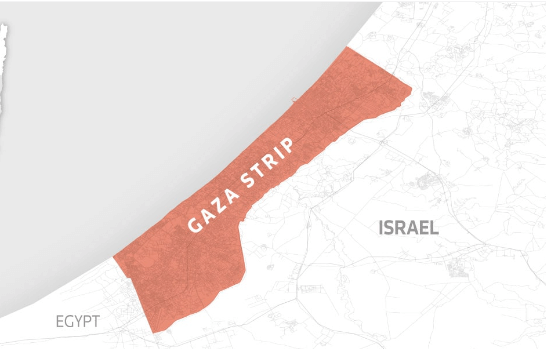Map:Cd_O2arlaeo= Gaza

The map designated as “Cd_O2arlaeo= Gaza” serves as a vital tool for understanding the intricate dynamics at play within this historically rich and politically charged region. By outlining key geographic features, urban centers, and historical landmarks, it provides a framework for analyzing the socio-political context that persists today. As we explore the implications of these elements, one must consider how they contribute to the ongoing humanitarian challenges and the region’s pursuit of autonomy. The question remains: what role will this understanding play in shaping future dialogues surrounding Gaza?
Overview of the Map
The map of Gaza serves as a crucial tool for understanding the complex geopolitical landscape of the region.
Its geographical layout reveals critical boundaries and urban centers, influencing political dynamics.
Additionally, the historical significance embedded in its terrain highlights past conflicts and cultural shifts, offering insights into the ongoing struggles for autonomy and peace.
Thus, the map is indispensable for comprehending Gaza’s multifaceted identity.
See also: Mansion:4ufwhkkcfis= House
Key Features of Gaza
Understanding the key features of Gaza is vital for grasping the intricate dynamics at play within the region.
Its geographical significance as a coastal territory influences trade and access, while its rich cultural heritage reflects a mosaic of historical influences.
These aspects not only shape the identity of its people but also impact the socio-economic conditions and the quest for autonomy and freedom.
Socio-Political Context
While the historical backdrop of Gaza is marked by conflict and struggle, its current socio-political context is shaped by a complex interplay of local governance, external influences, and ongoing tensions.
The humanitarian impact is profound, with enduring challenges affecting daily life.
Geopolitical tensions further complicate these dynamics, often hindering effective governance and exacerbating the plight of civilians seeking stability and freedom.
Implications for the Future
Navigating the complex socio-political landscape of Gaza presents significant implications for its future trajectory.
Effective conflict resolution strategies are essential to establish lasting peace and stability.
The provision of humanitarian aid must be prioritized to alleviate suffering and foster resilience among the population.
Without addressing these critical areas, the cycle of violence may persist, hindering prospects for sustainable development and freedom.
Conclusion
In conclusion, the map of Gaza serves as a pivotal instrument for understanding the intricate interplay of historical narratives, territorial disputes, and cultural identities. Its delineation of boundaries and urban centers encapsulates the region’s enduring challenges, while also highlighting opportunities for dialogue and reconciliation. The socio-political dynamics illustrated within this cartographic representation underscore the urgency for innovative approaches to conflict resolution, fostering a landscape ripe for sustainable development and harmonious coexistence among its diverse populace.





